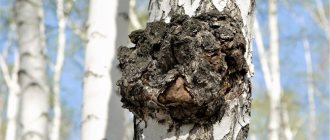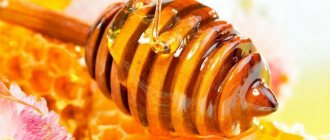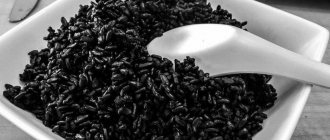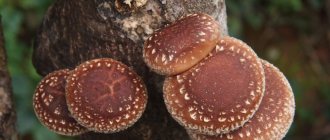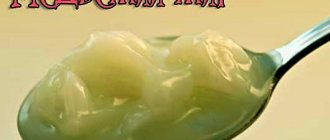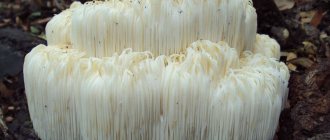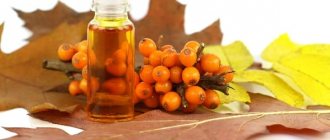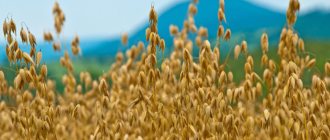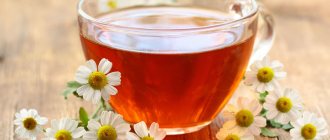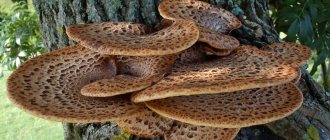Tzu-san-li (E36, longevity point) is one of the most commonly used acupuncture zones of all those present on the human body. In addition, we are talking about the most intensively studied point of acupressure and terazoxal therapy.
Solving health problems through massage is one of the oldest treatment methods in Eastern folk medicine, successfully used for several thousand years.
A Japanese legend from this period tells of a lucky man whose father revealed to him the secret of longevity - every day he had to massage one area under his knees. The son listened to his father, and during his long life witnessed the birth of several emperors.
In Japan, this acupressure zone is called the “point of 100 diseases”, in China – the “longevity point”. Let's see how to find the longevity point for a hundred diseases - Tzu-san-li, E36 - and how to massage it for maximum effect.
Acupressure - as an important part of Eastern medicine
In Chinese medicine, the human body is perceived as an energy system. Local people believe that with the help of massage you can influence the function of the organ and the flow of energy.
According to ancient teachings, the human body has 365 acupressure zones and 12 main meridians. These numbers are very reminiscent of the days and months of the year, aren't they? Acupressure (finger massage of specific areas), based on the study of meridians and channels associated with specific organs, demonstrates a direct positive effect on health.
In addition, in Eastern medicine, the body is perceived more as energy than flesh, so acupressure has a beneficial effect not only on the functioning of organs, but also on the flow of energy that constantly passes through the body.
Tzu-san-li is a special zone. The term "San-li" refers to the system of acupuncture areas ("Li" - to correct, regulate), and "Zu" refers to the position on the leg.
The benefits of stimulating Zu-san-li are enormous - the point controls the organs in the lower half of the body, the function of the spinal cord in those parts that are responsible for the proper functioning of the digestive tract, genitals, kidneys, and adrenal glands.
Article for you:
The most effective folk remedies for treating papillomas at home
With the help of Tzu-san-li massage, you can increase the activity of the adrenal glands, the most powerful “nodes” that act as the main defense of human health and are responsible for the secretion of adrenaline, hydrocortisone and other important hormones.
How to find the Tzu-san-li longevity point (E36)
Tzu-san-li is located under the knee joint and is relatively easy to find. Place your right hand on your right knee (left hand on your left knee); Place the finger of your second hand under the little finger into the hole between the bones. Here is the healing zone responsible for longevity. If you go for a lymphatic massage, pay attention to the massage therapist, who at a certain moment begins to intensively massage the Tzu-san-li zone (E36).
Tzu-san-li 3
Point Tzu-san-li (E-36)
WAYS OF INTERACTION
Miriam Lee - Insights from an Experienced Acupuncturist
( Miriam Lee –
Insight of a senior acupuncturist)
p.80
It is vitally important to apply the correct zu-san-li stimulation. In case of a cold in the initial stage, when the upper part of the body is hot and the lower part is cold, replenishing the zu-san-li strengthens the qi of the lungs so that it fights external harmfulness, and at the same time the he-gu (GI-4) and the lungs are emptied. Que (P-7). If the irritation that you spent on the Zu-San-Li devastates it, the patient will become worse, since you have overcome the pulmonary qi, and with it Wei
or protective qi.
Fortunately, with needles you can quickly correct this treatment and build up lung qi again. Unlike herbs or moxa, which once they enter the body and stay there whether needed or not, needle therapy can be easily reversed because you are working directly with the body's qi. The key to knowing whether your technique is correct or not is to carefully observe the patient's response. His face should become slightly flushed and warm, and his breathing should become slow and deep, the person should relax and fall asleep. If the face is pale, then the person feels cold, tense, anxious, and his breathing becomes shallower and faster, then the treatment has the wrong effect. This technique was incorrect and should be reversed.
In the elderly or chronically ill, replenishment (and moxa) of zu-san-li and emptying of he-gu (GI-4) (without moxa) can only strengthen.
I
found that these points act much like the herbs
Radix
Panacis
Ginseng ,
Rhizoma
Atractylodis Macrocephale ,
and C
ortex Cinnamoni ,
which
together strengthen the
upper , middle and lower energy centers of the body: chest qi, middle heater and ming-men
or gate of life. The power of these points in promoting health and long life cannot be overstated.
p.52
Technique is very important. I inserted the needles [into the tzu-san-li point] and then de qi or received qi. Then, with my right hand on the needle in his left leg and my left hand on the needle in his right leg, with the needles inserted shallowly, I moved both thumbs forward 240° and back 120° or ⅔ of a full turn forward. and ⅓ turn back. This was done three times, then the needles were pushed a little deeper, turning, as before, three times, pushed deeper again and turned three times - that is, a total of 9 rotations were obtained. It is important that both needles rotate at the same time.
The depth at different stages of insertion is determined by dividing the deepest [insertion] depth by 3. For example, according to an acupuncture text from the Shanghai TCM College, the insertion depth for Zu San Li is 1.2 inches. From time to time I pricked this point deeper, selecting the depth in accordance with the patient’s muscles. This man was big. So I went [with the needle] first ¾ inches deep, then 1½ inches, and finally 2¼ inches.
I repeated the rotation 9 times until the qi spread to my toes. If the qi moves only to the ankle, it will get stuck there, and the patient will have difficulty walking and moving the ankle after treatment. The chi must travel to the toes. After the qi reaches the end of this channel, the needle is pulled up above the channel and above the muscles, but without pulling it out of the skin and leaving it shallow, directing the end along the flow of this channel. This is a technique for replenishment.
V.G. Vogralik, M.V. Vogralik – Acupuncture (puncture reflexotherapy),
Gorky, Volga-Vyatka Book Publishing House, 1978, p. 18: ... Apparently in equally ancient times, another method of influencing “vital points” appeared - the cauterization method (Chinese “ju”, Japanese “mokusa”, in European pronunciation – “moxa”). It must be assumed that the belief in the healing power of fire, characteristic of all peoples at the dawn of their historical development, prompted this method.
There is a legend that in 1795, one of the oldest people in Japan, the peasant Mampe, arrived in Edo (the old name of Tokyo) at the invitation of the first minister. He was 194 years old. When the minister asked what the secret of his longevity was, he replied: “I learned mokus from my ancestors and have been using it all my life. My family and I perform moxibustion on our feet every month from the 1st to the 8th at the so-called Tzu-san-li point. My wife is now 173 years old, my son is 153, my grandson is 105 years old.” The old man was presented with rice and money and escorted home with honor. After 48 years, Mampe arrived again in Edo. He was 242 years old, his wife – 221, his son 201, his son’s wife – 193, his grandson 153, his grandson’s wife – 138 years old...
Whether this was true or not entirely true, but since then the “Zhen-Jiu” healing method has become increasingly widespread and studied... (a link to the source of this information is not provided, except for listing the ages of centenarians, nothing is said specifically about the technique
cauterization, which Mampe
learned
from his ancestors, only indicates how old he was at each visit -
approx. Acupunctu. ru)
Skye Ebot – Ancient use of point E-36 (zu-san-li) with different needle techniques and combinations of points
(Skya Abbate - Advanced Techniques in Oriental Medicine, Georg Tieme Verlag, Stuttgart, New York, ch.23)
As practitioners of Eastern medicine, we know that acupuncture points are vortices [whirlpools] of physiological activity that govern specific parts of the body. These points may possess certain elemental energies, for example, “Water” points, which can add and remove water from the body, regulate water metabolism, or they can possess zang fu organs or important substances.
The force of simply inserting a needle into a point will not automatically activate physiological functions. To achieve the therapeutic application of the point, it is necessary to use some styles of needling. These may involve actively rotating the needle (a typical Chinese technique), or subtle but equally effective positioning of the needle in relation to the flow of qi in the channel (a common Japanese approach).
This chapter illustrates these concepts by using the specific point E-36 (zu-san-li) and how it can produce different clinical effects in two ways: first through the use of specific needling techniques, and second by combining it with specific points. Tzu-san-li was chosen because of its multiple clinical effects on the energies and its importance in the clinical repertoire of healing points.
Among Chinese body dots, E-36 is perhaps the most famous. From a classical point of view, we know that this is the He (unifying) point of the stomach channel. He (unifying) points are those at which the channel qi meets [flocks] in depth. Thus, they have a direct effect on the organ, in this case the stomach. Moreover, on the Yang channel, the He (unifying) points correspond to the points of the “Earth” in terms of elements. This means that these points can regulate the energy of the “Earth” by “adding” or “taking away” the energy of the “Earth”, for example, humidity. The method for adding or removing moisture is the pinching method. The tonification technique can strengthen the earth element, and the dissipation technique can dissipate excess earth energy. In this way we can take into account the critical relationship between needling technique and point selection. The choice of point, of course, is determined by the treatment plan, which, in turn, is built in accordance with the diagnosis.
Let's return to E-36: as the Earth point on the Earth channel, it has the additional status of a hour point. Hour points have the same energy as the channel on which they are located. Possessing this unique quality is analogous to a “double dose”, so to speak, of the energy of this element. In the case of E-36, as a hour point on the Earth channel, this makes it a very “earthly” point. But, again, we decide what to do with this earthly energy through the injection technique.
In terms of indications, these will be clinical conditions that are direct derivatives of the classical energetic functions described above, E-36 is indicated for the treatment of stomach pain, vomiting, bloating, indigestion, rumbling in the abdomen, diarrhea, constipation, dysentery, mastitis, dizziness , mental disorders, hemiplegia, beriberi, pain in the knee joints, breast abscesses, swelling of the lower extremities, difficulty urinating, paralysis, seizures, asthma (pulmonary or renal type), duodenal ulcer, depression and diseases of the abdomen and stomach .
When treating with acupuncture, it is rare that only one point is pricked. So let's turn our attention to using E-36 along with other acupuncture points to see how they work together and what needling technique should be chosen to get perfect results. The source material for this discussion came from a lecture I attended in 1988 at the International Training Center of the Academy of Traditional Medicine in Beijing, China, entitled: "Famous Ancient Indications for [Point] E-36." In lieu of lengthy judgment and for convenience, this information is summarized in Table 23.1. The practitioner can use any tonifying (strengthening) or dispelling (loosening) technique he prefers. It is necessary to use the standard location of points and insertion depth, which can be consulted if necessary.
| Combination of points | Injection method | Impact on energy | Clinical conditions |
| E-36 and RP-6 (san-yin-jiao) | gain gain | Raises Yang Qi Strengthens Yin and blood; with emptiness and coldness of the spleen or with emptiness of qi In general, the main recipe for toning qi and blood | For rheumatic diseases, bi-syndrome, numbness of the legs |
| E-36 and VB-34 (Yang Ling Quan) | weakening weakening | He (unifying) point to eliminate turbidity (moisture-mucus) in the stomach He (unifying) point for clearing heat in the liver and gallbladder General goal: to harmonize Wood and Earth. For Tree and Earth diseases such as mucus retention in the average heater | Diarrhea, vomiting, nausea, sour belching, bi-syndrome, knee pain, foot pain |
| E-36 and RP-9 (Yin Ling Quan) | strengthening both points or using an equal technique | Being He (unifying) points, both strengthen the middle heater, dissolve moisture and improve transformation and transportation | Reduces edema caused by dysfunction of the heart and kidneys, dysuria, swelling of the lower extremities, digestion with bloating, chronic diarrhea |
| E-36 and VB-39 (Xuan-zhong) | weakening weakening apply moxa to VB-39 for stroke prevention | Improves circulation in channels and collaterals Reduces and clears heat-fire in the gallbladder Mandatory for any bone marrow disorders. Tones the bone marrow | Polio Wei syndrome Early signs of stroke, such as numbness in the hands or hemiplegia hypertension |
| E-36 and F-3 (tai chun) | gain weakening | Strengthens the Earth, harmonizes the stomach Calms the liver | For chronic hepatitis and jaundice |
| E-36 and V-67 (zhi-yin) | Moxa through a needle is recommended | Harmful to the fetus | Difficult childbirth, improves menstruation |
| E-36 and R-3 (tai-si) | gain weakening | For perverted qi, any qi going the wrong way leads the qi down | Anger-induced coma, sunstroke, toxic coma, breathing problems, dehydration, makes blood pressure normal |
| Combination of points | Injection method | Impact on energy | Clinical conditions |
| E-36 and GI-20 (ying-xiang) | gain weakening | Both points belong to Yang Ming legs and arms | Acute and chronic rhinitis, nasal congestion caused by the penetration of wind-cold (case of emptiness) |
| E-36 and R-7 (le-que) | toning weakening | Improves and strengthens the stomach Dissolves mucus | Empty cough caused by fatigue, deficiency type asthma |
| E-36 and MS-8 (lao gong) | weakening weakening | Clears heat from the diaphragm and chest Clears warmth in the heart and lungs. Lowers upward heat attack | Tightness in the chest, dry retching, irritability, belching, short temper, vomiting, sour belching, fatigue |
| E-36 and GI-2 (er-jian) | weakening weakening | Reduces Yang Ming fire, clears heat in the stomach channel | Toothache caused by upward attack of stomach heat, headaches caused by upward attack of Yang Ming heat, sore throat, frontal headaches, red face |
| E-36 and TR-6 (zhi-gou) | weakening gain | E-36 for fu organs TR-6 for regulating the qi of the three fu organ heaters | A famous recipe for constipation caused by decreased qi in the three heaters and dysfunction of the spleen and stomach. Can be used for constipation during pregnancy |
| E-36 and GI-10 (shou-san-li) | gain gain | Regulates Yang Ming Qi of the legs and arms For stomach and intestinal qi disorders General emptiness of qi and blood in the elderly | Stomach and intestinal disorders. A good recipe for [achieving] health Weakness of the spleen and stomach, bloating, fullness and pain, weak stools, irregular stools, constipation, anorexia Dizziness, blurred vision, lower limb weakness, fatigue, hemiplegia, Wei syndrome and bi syndrome, limb tremors caused by emptiness of qi and blood, found in elderly patients |
| Combination of points | Injection method | Impact on energy | Clinical conditions |
| E-36 and V-17 (ge-shu) | gain or equal reinforcement or equal injection. The end of the needle is directed towards the spine | Harmonizes blood. Stops bleeding Creates blood | Vomiting blood due to cold in the spleen (unable to control blood) For the upper respiratory and digestive tract |
| E-36 and V-18 (gan-shu) | gain gain (first stab V-18) | Helps qi Replenishes blood | Dizziness, blurred vision due to empty liver blood Fatigue due to dysfunction of the stomach and liver, dysfunction of the spleen and stomach |
| E-36 and VG-4 (ming-men) | gain enhancement (moxa may be used) | Reduces Ming Man's fire | Impotence, accelerated ejaculation |
| E-36 and MC-6 (nei-guan) | gain or equal movement | Harmonizes the stomach, revitalizes Yang Qi | Stops vomiting, spontaneous sweating associated with Yang Xu |
| E-36 and VC-4 (guan-yuan) | gain gain | Toning points The intersection of the three Yin on the stomach is better than RP-6. Includes RP-6 function. Tonifies source qi | Premature ejaculation Impotence Caused by Empty Qi |
| E-36 and VG-14 (da-zhui) | decrease decrease May increase white blood cell count when using moxa | Anti-inflammatory. Reduces the number of leukocytes during inflammation | Pathology of leukocytes |
| E-36 and GI-4 (he-gu) | gain gain (reduce if there is moisture and heat buildup) | Regulates the qi of the stomach and intestines Inability of qi to rise or fall | Acute and chronic diarrhea caused by qi dysfunction Vomiting, nausea associated with the intestines |
| Combination of points | Injection method | Impact on energy | Clinical conditions |
| E-36 and VC-21 (Xuan-li) | decrease decrease | A very famous ancient recipe for regulating the upper and middle heaters Sends qi down. When the spleen and stomach lose their ability to transport and transform | Eliminates food stagnation Severe asthma, poor diet, bloating, nausea, anorexia, obesity, belching, weak stools, hard masses |
| E-36 and VC-11 (Jian-li) | gain gain | Strengthens the spleen and stomach Harmonizes the stomach. Raises the clean. Dissolves moisture The main recipe for stomach diseases and epigastric pain | Abdominal pain, chronic diarrhea due to dysfunction of the stomach and intestines |
| E-36 and VC-12 (zhong-wan) | gain gain | The main recipe for stomach ulcers | Stomach ulcer, epigastric pain |
| E-36 and ST-25 (tianshu) | gain decrease gain decrease leave the needles for 2 hours for dysentery | Regulates and harmonizes the qi of the stomach and intestines Intestinal transport disorders | Wide range of indications Chronic diarrhea Acute diarrhea Constipation due to intestinal transport problems Very effective in treating bacillary dysentery |
| E-36 and VC-6 (qi-hai) | gain gain if qi is in disarray - reduce | The main recipe for toning qi. Particularly suitable for empty qi | Wide range of indications After serious illnesses |
| E-36 and V-43 (gao-huang) | gain gain | Removes pathogens Strengthens Antipathogenic Qi to Support Fitness and Health | Pulmonary tuberculosis, failure caused by fatigue |
- Vladimir - February 06, 2021
Cognitive, the desire to comprehend and use. Thank you.
| Name: |
| Email: |
| Your comment: |
| Enter the numbers from the picture: |
How will your body respond to Tzu-san-li (E36) stimulation?
Traditional Eastern medicine says that massage of this area will help a person gain confidence, internal stability, and overcome stress and tension. In addition, with the help of Tzu-san-li (E36) massage, you can make a significant contribution to the treatment of many diseases, including impotence, dizziness, constipation, inflammation of the stomach, and urinary incontinence.
Stimulation of Tzu-san-li increases immunity, a person’s health and vitality increase. The modern standard for the use of this massage, reviewed and given in textbooks on pharmacology and medicine, aimed at the study of Eastern teachings, says that Tzu-san-li has a number of positive effects on the body. The main effects of Tzu-san-li (E36) stimulation on health:
- improvement of spinal functions;
- improving the health of the reproductive organs;
- treatment of kidney and adrenal diseases;
- support of endocrine glands;
- improved digestion;
- regulating the formation of various hormones, especially adrenaline and cortisol;
- inhibition of inflammation;
- stabilization of glucose and insulin levels in the blood;
- reducing the risk of heart attack and stroke;
- there are many other effects.
In view of these positive effects on the body, it is not surprising that regular massage of the Tzu-san-li longevity point (E36) is loved by supporters of a healthy lifestyle, who use it as a natural prevention of a number of diseases (and a means to combat them).
Keys to health
Eastern sages knew in ancient times that by acting on certain areas of the body, any organ could be healed.
They used over 360 points. We don’t need to know them all, just the most basic ones. According to various sources, from one and a half to several thousand years ago, the peasant Mampe lived in China, Korea, Japan or Vietnam. Perhaps we are talking about a collective image. And there were entire clans of such long-lived people.
During the population census (the second in Mampe’s life), it turned out that this 88-year-old peasant acquired a young wife at the age of 50. For the ancient world, this was a very respectable age. The census taker ran to report to the emperor. - Oh, son of heaven! I discovered a real miracle! The emperor became interested, but did not have time to call Mampa to him, he died.
How to perform acupressure E36?
Before starting the massage, sit comfortably. Legs should be relaxed. Breathe easily and focus your mind on your feelings. This is a state of harmony from which, according to Eastern medicine, the healing process begins. In addition, Tzu-san-li massage has a stimulating effect.
Massage the active point with your fingertips in a clockwise circular motion, with 9 repetitions on each leg. Continue the process for about 10 minutes, alternating both legs. Then hold half a garlic clove at these points for 1-2 hours until the skin turns red (slightly). The garlic in the E36 area can be secured with a bandage. Do the massage with your fingertips. The effects can be enhanced by using rice or buckwheat grains.
When to massage?
The timing of the healing procedure depends on the expected effect. Massage can be done in the evening before bed. However, for some people it can cause insomnia. If you fall into this category, then the best time for you is early in the morning or around lunchtime.
- The morning procedure primarily affects the brain, cardiovascular system, and digestion. Afternoon stimulation of Zu-san-li has a greater effect on headaches, insomnia, anxiety, stress, and nervous tension.
- Evening massage is good for immunity, improving organ functions, metabolism, and weight loss.
Article for you:
How to boost an adult's immunity at home
Point Tzu-san-li or from “one hundred diseases”
We will be interested in another point of youth or from “a hundred diseases”. Does massaging this area of the body really help lengthen our life?
The inhabitants of the Land of the Rising Sun proved this from their own experience. The Japanese do not age for a long time and are active until old age. It is located on the leg 3 cun below the knee.
What effect does Tzu-san-li have?
- Strengthens the body, improves immunity;
- Improves the functioning of the cardiovascular system;
- Heals the stomach from gastritis;
- Helps normalize blood pressure and insulin levels, protecting against diabetes;
- Heals all types of headaches, neurosis, depression, insomnia;
- Strengthens memory, activates thinking, delays the aging of brain cells;
- Normalizes the hormonal system;
- Helps to recover after a stroke.
If we continue the list of effects of Tzu-san-li, then it is worth noting its beneficial effect on all human organs and systems.
But its main advantage is considered to be increased energy, reversal of aging, and prolongation of a healthy life cycle.
To find this “magic” place on the body, you should use a length measure - “tsun”. For men, this is the distance between the folds of the bent middle finger on the left hand, and for women, on the right.
The photo shows the location of this point. It is steam room, located on the knees under the kneecap.
Methods for detecting Zu san li
There are several ways to find Tzu-san-li:
- Place your palm on the kneecap, then the point will be under the little finger.
- Sit with your feet on the floor. Lift your toes, pull towards you without lifting your feet from the floor. A protrusion will appear just below the knee.
- Feel it with your hand. Place your finger on it and point your toes down. The finger will remain on the point you need.
- Place your open palm on your knee. Find the dimple under your ring finger. It forms between the bones of the leg. This hole needs to be massaged.
How to activate the longevity point
Eastern healers advise waiting until the new moon to begin turning the biological clock back.
In the East they do cauterization. They take wormwood cigars or moxas, light them, and then heat the desired area. The cigar should smolder and warm up Tzu-san-li.
If there are no cigars, then you need to cut a small circle from the mustard plaster or pepper plaster and glue it to the right place. Wear without removing for 8 days.
But these procedures have contraindications:
- Heart attack.
- Oncology.
- Heat.
The safest procedure is massage. Find the points, press with your index fingers and press, applying pressure under the knees according to the following pattern: 10 seconds of pressure, 5 seconds of rest. The session should last 2 minutes.
There are different ways to influence the point.
- It is recommended to massage 36 times clockwise and 36 times counterclockwise.
- You can process it as many times as you are old.
- Can be processed 108 times - the number of completion in the East,
- or as many times as you want to live.
- You can massage with rotational movements without moving to the side (for 3 minutes).
Other techniques for massaging the desired point
- Chinese massage with walnuts : take 2 walnuts and roll them in the longevity point area. Thousands of years ago, people cleaned their energy meridians in this way.
- Tapping: Make fists and tap the points 100 times, on both knees at the same time. This way you will not only prolong your life, but also get rid of many vascular diseases.
Types of massage
Stimulation of the E36 longevity point can affect health or energy.
Energy
The technique of stimulating massage is quite simple:
- sit on a chair, take a comfortable position, concentrate your thoughts;
- use your index finger to find the longevity point on your right leg;
- apply relatively strong pressure to this area, making circular movements clockwise (about 9-10 times);
- repeat the procedure on your left leg;
- Alternating legs, do 81 stimulations of the Tzu-san-li longevity point on each leg.
What effects will energy stimulation of longevity point E36 provide:
- Productivity increase.
- Improved mood.
- Gaining the desire to communicate, the ability to enjoy every new day.
- Increasing sexual desire is important for both men and women.
- A surge of courage and strength.
Treatment
Healing massage, used for therapeutic purposes, is recommended in the afternoon - ideally before bed (if this does not cause sleep disturbances). The technique is similar to stimulating massage, but the movements are made not clockwise, but counterclockwise. What acupressure will provide:
- relieves abdominal pain;
- eliminates bloating;
- treats vomiting, diarrhea, dysentery, dyspepsia;
- prevents appendicitis;
- relieves weakness and numbness of the lower extremities, swelling;
- helps with mastitis;
- eliminates depression, improves mood;
- prevents epilepsy attacks;
- relieves cough;
- helps with dizziness;
- stabilizes heart rhythm.
Are there other points of longevity?
There are many zones on the human body whose effects are almost as good as the Tzu-san-li longevity point. Let's consider other longevity points located on the lower extremities:
- on the bends of the fingers (under the pads) - it is advisable to stimulate these areas with crossed legs;
- on the thumbs - under the nail hole;
- on top of the foot - at the intersection of the first metatarsals and proximal phalanges of the big toes;
- between the ankle and the Achilles tendon.
Article for you:
The most effective folk remedies for treating snoring in women and men at home
It is recommended to stimulate active points in a parallel way: on the left leg - with the left hand, on the right leg - with the right hand.
Clinical researches
Modern clinical studies of the Tzu-san-li durability point (E36) are carried out in 2 directions.
- The first direction is the treatment of abdominal pain, including cramps that usually occur in the stomach, gall bladder, and kidneys. In this case, it was shown that stimulation of the Tzu-san-li longevity acupressure point has an immediate positive effect (within seconds or minutes), the person often experiences relief after the 1st treatment.
- The second area of clinical research concerns the treatment of impaired immune functions, in particular, white blood cell deficiency and increased immunoglobulin levels. In this case, stimulation of Zu-san-li is carried out daily, usually for 10-14 consecutive days (the course is repeated several times after a short break of several days).
One study found these 2 areas of interest to be stimulating the longevity acupressure point in cancer patients suffering from abdominal pain (people with cancer typically have impaired immune function, either spontaneously or as a result of pharmacological therapy).
Results? Very positive. Significant improvement in health status has been reported in patients with acute cervical inflammation and postoperative pain.
What about longevity?
As mentioned above, Eastern medicine views the human body as an energy system that must be in perfect balance. This is the only way it can serve as long as possible.
The flow of energy that we do not see is responsible for 100% of the function of the organs. But when it is lost or misdirected, a disease occurs. Since the simulation of the Tzu-san-li longevity point is simple and anyone can do it, try doing it on a regular basis. Trying is not torture.
Warming up the longevity point
Experts advise warming the point with a lit wormwood cigar. Of course, you cannot put a lit cigar to your skin, but you only need to bring it to a point at a distance where it only warms, but does not burn. An excellent method is to warm the points with stones heated in the sun.
This method is as old as the world. The warming method is very effective and makes vital energy circulate actively and harmoniously. There is a certain rule. The longevity point can only be warmed up and activated in the morning. Exposure time is from 4 am to 10 am.
